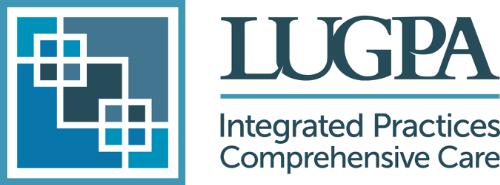
March 2023 Recent Focus on Noncompete Agreements Could Have In July, the Biden Administration released an executive order that included proposed reforms that would create a ban on noncompete agreements that the Administration argued limit a worker’s ability to leave their job. The fact sheet released by the Administration argued that the agreements, which had been comparatively rare, have now become common, with an estimated 1 in 5 workers being bound by one, and even more common in the healthcare industry. President Biden even promoted this effort in his 2023 State of the Union address. The Biden administration is in the final stages of issuing a rule from the Federal Trade Commission that would ban employers across industries from adding provisions in an employment agreement that would prohibit workers from taking a job with a competitor or starting their own business in the same industry. While opponents of noncompete agreements argue the agreements limit competition and may increase the doctor shortage, proponents argue that the agreements are necessary to protect hospitals and medical practices that have made substantial investments in recruiting, relocating, and training doctors. LUPGA opposes the proposed FTC rules that would restrict non-competes in the healthcare marketplace, and we will provide comments to the FTC on the negative impact of such rules on the independent practice of urology.
HHS Secretary Responds to the President’s Executive Order on Drug Prices Reforming how prescription drugs are priced for consumers has been a health policy priority for the Biden Administration. In October, the White House introduced Executive Order 14087, “Lowering Prescription Drug Costs for Americans,” which called on the HHS Secretary to consider new healthcare payment and delivery models that would lower drug costs and promote access to innovative drug therapies for Medicare and Medicaid program beneficiaries. The Executive Order asked for models with both lower cost-sharing for commonly used drugs and provide support for value-based payments which promote high-quality care. On February 14th, CMS announced three new models for testing by the CMS Innovation Center that is designed to help lower the cost of drugs, promote increased accessibility to new and effective drug therapies, and improve the overall quality of care. The models are:
For providers seeking additional information on the new models, CMS has created a Fact Sheet which is available at https://innovation.cms.gov/data-and-reports/2023/eo-rx-drug-cost-response-report-summary.
CMS is Continuing Efforts to Improve Hospital Price Transparency in 2023 Boosting healthcare price transparency is one of the primary upcoming policy goals at CMS. In a February 14th article in Health Affairs, two CMS officials, CMS Deputy Administrator and Director Meena Seshamani, and CMS Chief Transformation Officer Douglas Jacobs, wrote an article outlining several steps the agency is taking to boost hospital price transparency. The new laws require each hospital operating in the United States to make the standard charges for the items and services it provides openly available to the public. In an article released the same day, Andrew Cass of Becker’s Hospital Review outlined the four steps CMS is undertaking to improve price transparency and ensure hospitals are following the new rules:
Health Care Providers are the Favored Target of Cyberattacks Healthcare providers continue to be a primary target for cybercriminals seeking to steal personal information, A new report from cybersecurity analyst Black Kite released early in 2023 found that the healthcare industry was the most common victim of cybersecurity breaches last year. According to the report, around 35 percent of cyberattacks occurred in health care in 2022, an increase of one percent from 2021. The most common form of cyberattack was ransomware, with these attacks making up 27 percent of third-party breaches. One notable attack was on the healthcare association Highmark Health, according to Black Kite, Highmark has a security breach that exposed the information, including names, dates of birth, and prescription information, of 67,147 people. In a release to the media published in Urology Times, Black Kite Chief Security Officer Bob Maley warned that all companies with access to personal data need to stay vigilant and not underestimate the potential of cyberattacks. “Today’s cyber landscape is riskier, costlier, and more complicated than ever before. Bad actors are capitalizing on global disruption with destructive third-party breaches, allowing them to compromise multiple victims in one fell swoop,” said Maley. “Cybersecurity leaders must become as agile as the adversary, and that begins with keeping a continuous pulse on your digital ecosystem’s cyber posture.”
Senate Committee Discusses Reforms to Limit PBM Abuse On February 16, the Senate Committee on Commerce, Science, and Transportation convened a full committee hearing titled “Bringing Transparency and Accountability to Pharmacy Benefit Managers”. The meeting focused on a bill that was proposed and passed out of the committee during the last legislative session, S. 127 – The Pharmacy Benefit Manager Transparency Act of 2023. The PBM Transparency Act empowered the Federal Trade Commission (FTC) to increase drug-pricing transparency and create rules holding Pharmacy Benefit Managers (PBMs) accountable for unfair and deceptive practices. The Act specifically prohibits PBMs from engaging in spread pricing, which occurs PBMs charge health plans and payers more for a prescription drug than what they reimburse to the pharmacy, and then keep the difference in price for themselves. The bill also prohibits arbitrarily reducing drug reimbursement payments to pharmacies and charging pharmacies additional fees to offset any federal reimbursement changes. The act does include some exemptions for PBMs that pass on any rebates to their consumer and offer complete transparency to their buyers. The bill received bipartisan support during the meeting, the only opposition to the proposal arose due to concerns over giving the FTC additional authority, fears of vertical consolidation within the drug industry, and a concern over the effect of a new rule on drug costs. LUGPA supports legislative efforts directed at Pharmacy Benefit Managers that address unfair payor policies that negatively impact patient access to care and the ability of urologists to provide appropriate treatment. We will monitor for any new developments with the previous proposal and respond to any new legislation. |





